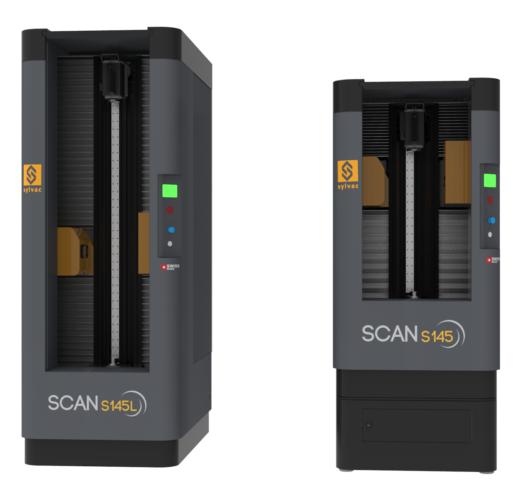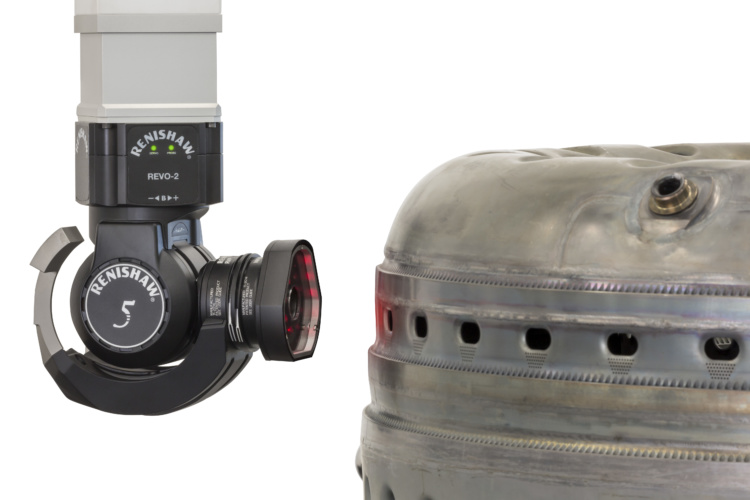Metrology is an often-overlooked part of industrial production, but it facilitates both the precision and safety associated with modern manufacturing. Advances in measurement can not only drive efficiencies, they can also help underpin new advanced manufacturing techniques, helping incorporate automation into factory lines. The Engineer caught up with three leading experts in metrology to find out the latest developments in their fields.
Meet the experts
Paul Maxted - Director of Industrial Metrology Applications, Renishaw
Mark Youings - MD, Tinius Olsen
Martin Hawkins - UK Sales Director, Bowers Group
What trends/customer requirements are currently driving developments?
PM: We are seeing an increased requirement for automation of both processes and decision making in the factory, where the availability of actionable data near to the point of manufacture is essential. Measurements are being made at every stage of the manufacturing process chain to reduce or compensate for sources of variation without the delays associated with remote final verification. Metrology assisted closed loop manufacturing is now accepted as a key enabler towards highly productive automated manufacturing. Moving metrology to the shopfloor is improving productivity, reducing costs and reducing the reliance on skilled people to make decisions and maintain process quality.

MY: We are seeing customers’ requirements become more wide-ranging but also more application specific. Where Tinius Olsen testing machines were historically a destructive testing tool, they are now being used as fine tolerance (non-destructive) press tool machines. This might involve pressing a shaft into a digital motor or pressing two fine tolerance ‘controlled’ parts together. Other customers want a fully integrated system of robot and test machine, to reduce overheads, increase productivity to a 24-7 operation and get test results directly integrated into their own processes for faster turnaround and product release.
MH: Industry 4.0 can come in many forms, but Connected Metrology is an area of real interest to our customers. In any manufacturing business, connectivity of data and the ability to validate components and record that data, is very important. The Sylvac Sylcom Software gives us the ability to connect a range of Bowers and Sylvac hand tools via Bluetooth, alongside a Sylvac Optical inspection machine, and collect all the measurement data in one place. There are a number of benefits that this brings, including traceability of measured data and the ability to monitor and control manufacturing processes.
Is there a key solution or technology that you’re excited about?
MH: Developing on my earlier theme, I’m particularly excited to see this expand to the next stage of product development from Sylvac. This will allow collected inspection data to be accessed not just in the local manufacturing plant, but by a wider group of employees, sometimes on the other side of the world, in real time. This new cloud-based solution will allow for remote monitoring of inspection results, process control and the automated machine tool correction data capability. It will bring together all machine based and hand instrument-based data alongside SPC process information.
MY: Solutions are very much customer specific, and this is something that Tinius Olsen prides itself in providing. The UTM (Universal Testing Machine) is by definition ‘universal’, but with bespoke or conventional fixtures and fittings, can quickly become a specialist testing tool for a customer’s application. The ST and SL series of testing machines are designed with a new controller, featuring a high sampling rate and allowance of additional data inputs. By adding technology ourselves or from our partners, Tinius Olsen can quickly adapt a conventional universal testing machine into a bespoke machine for a specific customer requirement.
PM: The development of the REVO 5-axis scanning system for CMMs heralded significant time savings in measuring critical surfaces on parts for industries such as aerospace and automotive. The infinite positioning allows access to more features and surfaces using fewer stylus set ups. These benefits to our customers have now been further increased through the capability for multiple sensor types to be used with the same infinitely positioning head. Optical measurements using the RVP camera system, surface finish measurements at any angle and 3D surface capture, using our latest fringe projection probe (RFP), allow multiple measurement types to be carried out in the minimum time on a single measurement platform.
Give us a specific example of how a particular solution is helping a customer?
PM: Senior Aerospace Weston wanted to become more efficient in the inspection of critical machined aerostructure parts - some of the more complex aerostructure parts were taking up to ten minutes to inspect using existing 3-axis CMMs, causing bottlenecks and capacity limitations. The company had introduced various inspection methods using traditional measuring equipment and hard gauging, but to limited effect. With build-rates increasing, the company approached Renishaw for a solution to improve measurement efficiency without compromising quality. We proposed the Equator shopfloor gauge. This solution cut inspection times per part by around 75 per cent and introduced more comprehensive traceability to components ranging from small items measuring 50 mm, to large engine pylon brackets and landing gear fittings used in Airbus A320 and A321 models.

MY: Recently we supplied a universal testing machine to a company who are not using the machine as a tensile/compression testing machine, but instead as precision press tool. For this application Tinius Olsen was asked to design and manufacture a special press tool fixture with three independent load cells (force transducers) integrated within the fixture itself. The customer also required the machine to be finished in their own brand colours, providing a truly bespoke solution. The force signals from the three independent load cells were integrated directly into the testing machine with each sensor having its own independent signal conditioner.
MH: During a recent installation of a Sylvac Scan optical system, we were able to add the collection data from a range of Bowers Bore Gauges and Sylvac Indicators fitted with Bluetooth, to overall measurement results from the Scan machine. This overall connectivity solution means that the customer can fully inspect all the elements of the component and store all the inspection data against that part in one central server location.
What interesting developments can we expect in metrology in the coming years?
MY: A major trend is the growth in robotic applications, in particular cobots, where a machine and cobot work together. Robotic applications were once only considered for high throughput volume testing, but now the market is also opening to lower volume batch production testing. This can be as straightforward as using a robot to integrate one or more testing machines to create a full feature testing cell.
PM: We foresee a further transition of metrology away from traditional QC labs to the factory floor. This will lead to more integrated metrology solutions validating processes at source, with real-time automatic compensation for process variation. A minimum number of discrete metrology systems will be integrated, with an increasing range of sensor technologies delivering the flexibility to meet increased product mix, variable feature types and frequent product design changes.
MH: We will see automation take a bigger role with more machines able to work with collaborative robots to load and unload machine tools, but also place these finished or semi-finished components into inspection devices and allow good parts to continue through the process whilst re-working others. With the need to drive up efficiencies these changes are essential for the UK to maintain a competitive edge.
VISIT THE ENGINEER'S SUPPLY NETWORK FOR MORE METROLOGY PRODUCT NEWS




Swiss geoengineering start-up targets methane removal
No mention whatsoever about the effect of increased methane levels/iron chloride in the ocean on the pH and chemical properties of the ocean - are we...